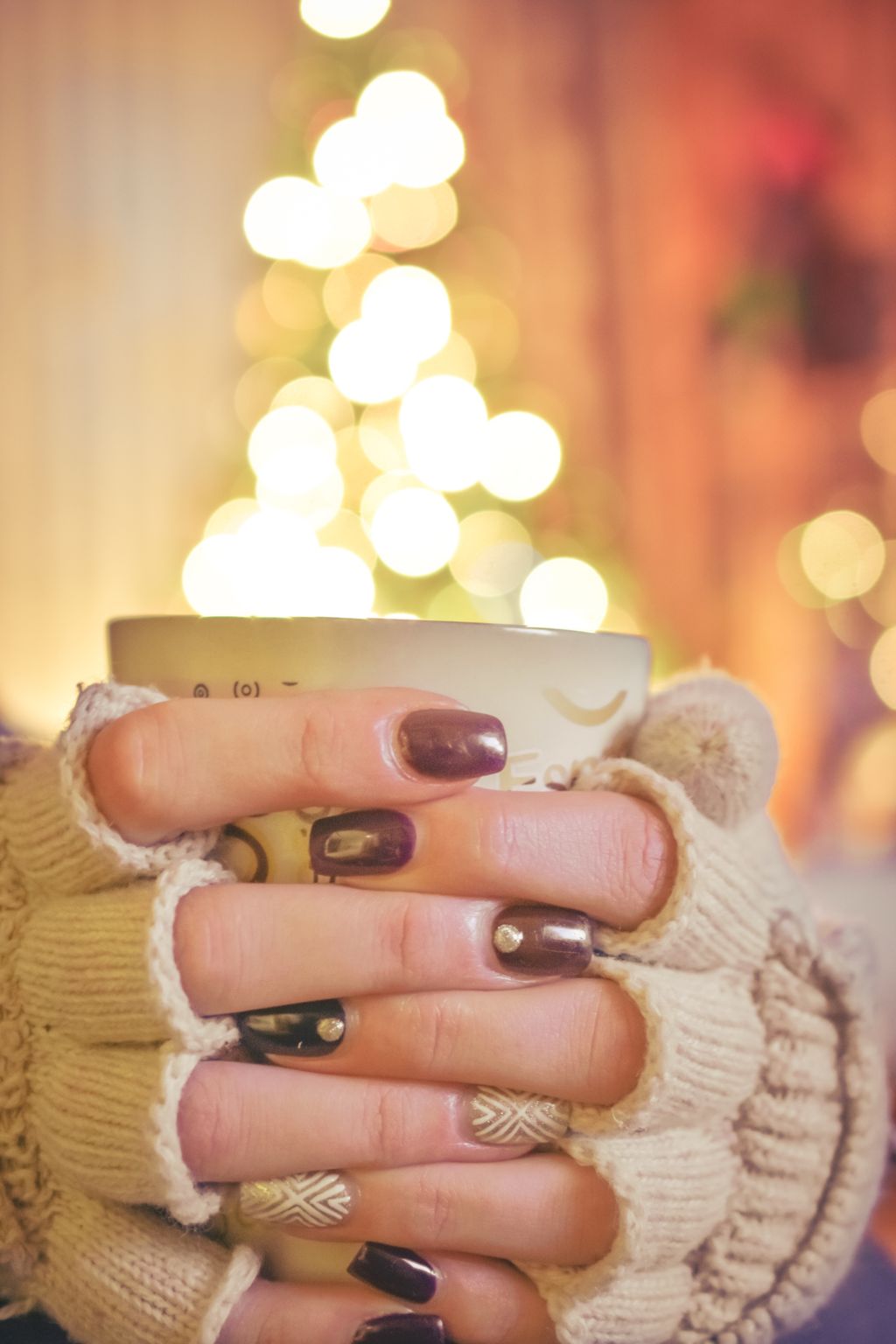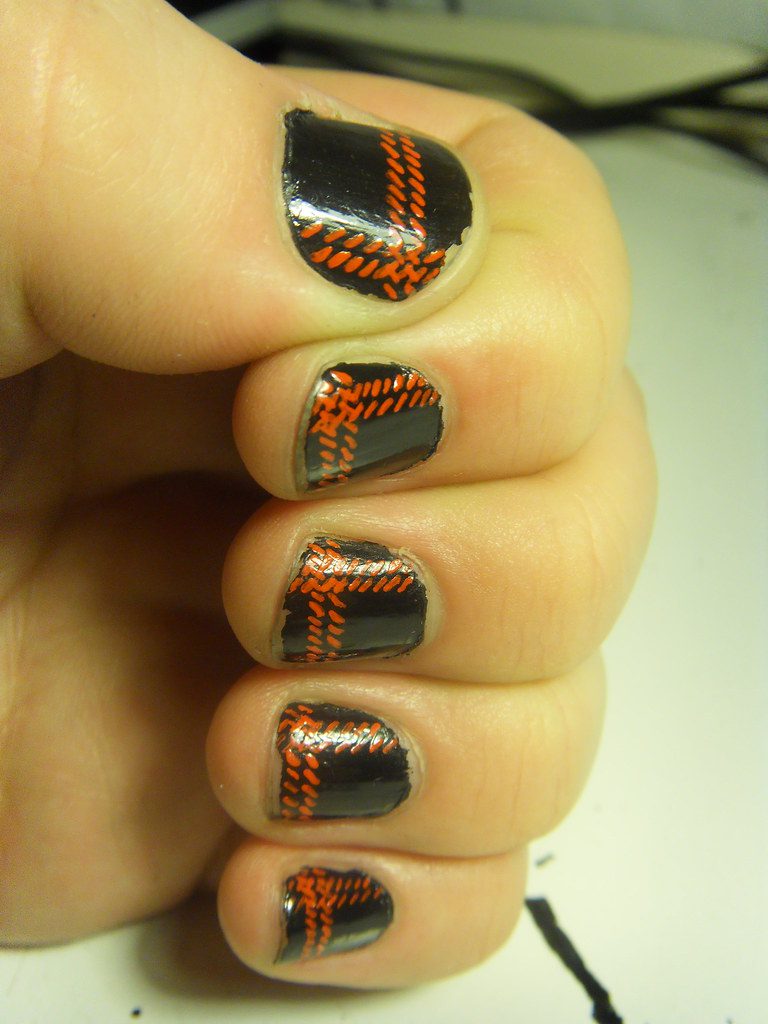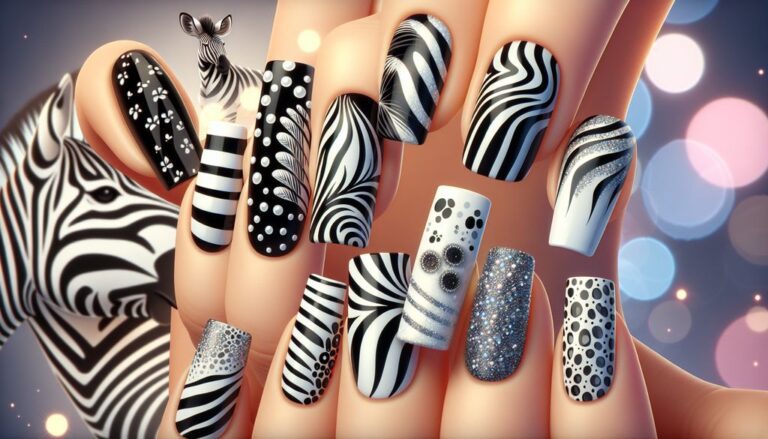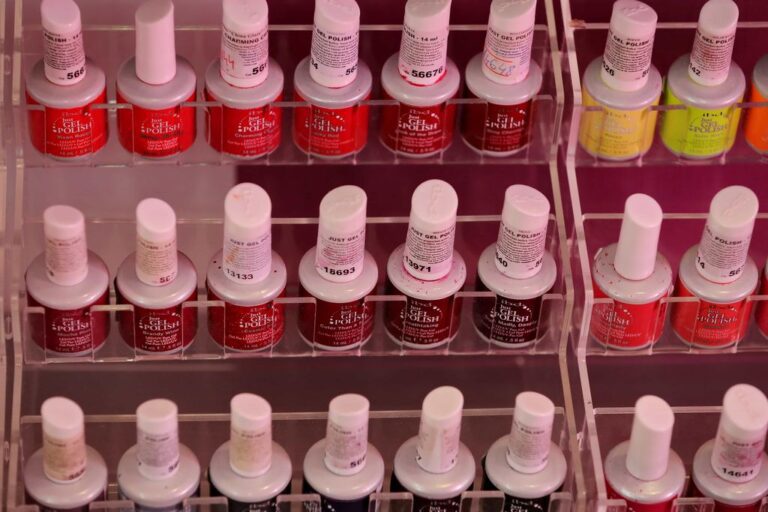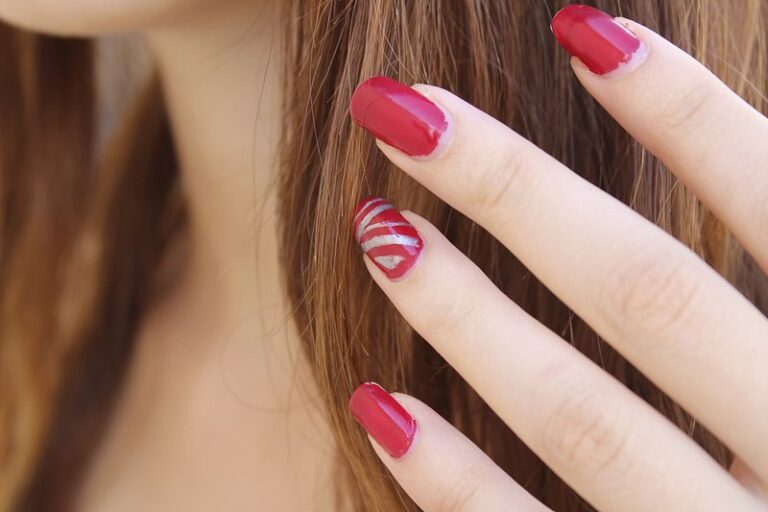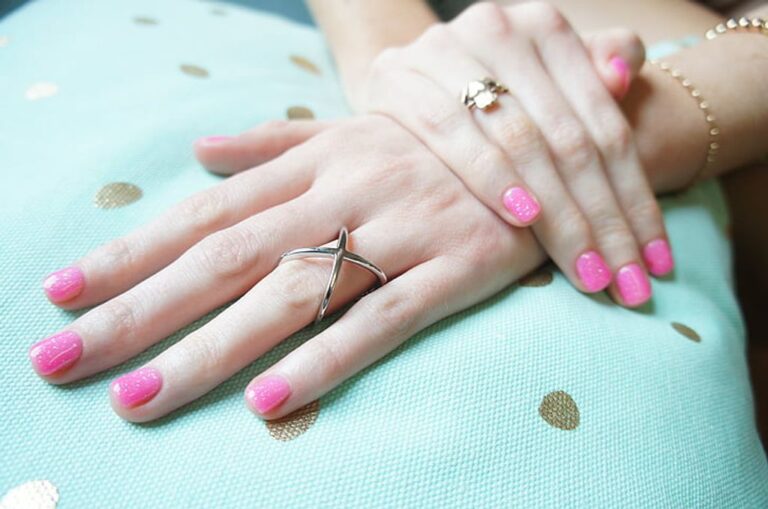Yellow Warning: When Nails Turn Yellow Disclosed
Deprecated: mb_convert_encoding(): Handling HTML entities via mbstring is deprecated; use htmlspecialchars, htmlentities, or mb_encode_numericentity/mb_decode_numericentity instead in /home/u654140373/domains/nailinspire.com/public_html/wp-content/plugins/kadence-pro/dist/elements/elements-init.php on line 1267
Deprecated: Function utf8_decode() is deprecated in /home/u654140373/domains/nailinspire.com/public_html/wp-content/plugins/kadence-pro/dist/elements/elements-init.php on line 1275
Yellow nails can be indicative of various underlying causes, ranging from fungal infections to lifestyle habits. Understanding the causes, symptoms, diagnostic approaches, treatment options, and preventive measures is crucial for maintaining nail health. This article aims to shed light on the factors contributing to yellow nails and provide valuable insights on how to address and prevent this common concern.
Key Takeaways
- Yellow nails can be caused by fungal infections, chronic smoking, nail polish staining, and underlying medical conditions.
- Changes in nail texture, altered growth patterns, and pain/discomfort are common symptoms accompanying yellow nails.
- Physical examination, laboratory tests, and imaging play key roles in diagnosing yellow nail conditions.
- Antifungal medications, lifestyle modifications, and advanced treatments are effective options for treating yellow nails.
- Proper nail hygiene, choosing the right nail care products, and maintaining a balanced diet are essential for preventing yellow nails.
Unveiling the Causes of Yellow Nails

Fungal Infections: The Primary Culprit
When it comes to yellow nails, fungal infections are often the main offender. These infections are caused by various fungi that thrive in warm, moist environments, such as public showers and swimming pools. The fungi invade the nail bed and lead to discoloration, typically starting at the tip and eventually spreading to the rest of the nail.
Onychomycosis, the medical term for fungal nail infections, can affect both fingernails and toenails, although it is more common in the latter. Risk factors include advanced age, reduced blood circulation, and a weakened immune system.
Tip: Keeping your feet dry and clean can significantly reduce the risk of fungal infections.
Early detection and treatment are crucial for effectively managing fungal nail infections. Over-the-counter antifungal treatments may be sufficient for mild cases, but persistent or severe infections often require prescription medication.
The Impact of Chronic Smoking
Chronic smoking is a significant factor contributing to the discoloration of nails, turning them a yellowish hue. The nicotine and tar found in cigarettes are the main offenders, staining the nails over time. This is not merely a cosmetic issue; it can also be indicative of reduced blood flow and oxygen to the nail beds, which can affect overall nail health.
Smokers’ nails often exhibit a more pronounced yellowing when compared to non-smokers. It’s important to note that the severity of the yellowing can correlate with the duration and intensity of smoking habits. Here’s a simple breakdown of the relationship between smoking and nail discoloration:
- Nicotine causes yellow staining on the surface of the nails.
- Tar and other chemicals in cigarettes can lead to deeper and more persistent stains.
- Reduced blood flow from smoking can exacerbate the yellow appearance.
Tip: Quitting smoking can gradually help in restoring the natural color of your nails, alongside numerous other health benefits.
Nail Polish Staining: A Cosmetic Concern
Frequent use of nail polish can lead to an aesthetic issue known as nail polish staining. This occurs when pigments from the polish penetrate the superficial layers of the nail, leaving behind a yellowish discoloration. While this is primarily a cosmetic concern, it can be distressing for those who value the natural appearance of their nails.
To minimize staining, consider these tips:
- Opt for a clear base coat before applying colored polish.
- Limit the use of dark or highly pigmented polishes.
- Allow nails to ‘breathe’ by taking breaks between polish applications.
Tip: When choosing nail polish, look for formulas that are labeled as ‘non-staining’ to reduce the risk of discoloration.
Underlying Medical Conditions
While fungal infections and lifestyle factors are common causes of yellow nails, it’s important to consider that they may also be indicative of underlying medical conditions. Certain diseases can manifest symptoms in the nails, providing clues to internal health issues.
Psoriasis, thyroid disorders, and lung diseases are among the conditions that can cause nail discoloration. For instance, yellow nail syndrome is a rare condition associated with respiratory issues and lymphedema, leading to yellowing and thickening of the nails.
Remember: Yellow nails can be more than a cosmetic issue; they may signal a need for a comprehensive health evaluation.
It is essential to monitor other symptoms that accompany nail changes, such as fatigue or respiratory problems, which could point to a more systemic condition. If you notice persistent yellowing of your nails along with other health changes, it is advisable to seek medical attention.
Symptoms Accompanying Yellow Nails

Changes in Nail Texture
When nails turn yellow, it’s not just the color that can change. The texture of the nails often becomes a telltale sign of underlying issues. Abnormal nail textures can range from being unusually smooth to excessively rough. Some individuals may notice their nails becoming brittle, which can lead to easy breakage or splitting. In other cases, nails may exhibit ridges, bumps, or a pitted surface.
Brittleness and changes in texture are not just cosmetic concerns; they can also interfere with daily activities and indicate the need for a closer look at one’s health. For instance, nails that are too soft may fold upon pressure, while overly hard nails can become painful and difficult to trim.
Tip: Regular moisturizing can help maintain nail flexibility and prevent brittleness. However, persistent changes in texture should be evaluated by a healthcare professional.
Altered Nail Growth Patterns
When nails turn yellow, one may also notice an alteration in the way they grow. Altered nail growth patterns can be a sign of nutritional deficiencies or more serious health issues. Nails may grow slower or faster than usual, and in some cases, the nail may even detach from the nail bed, a condition known as onycholysis.
- Onycholysis should be monitored closely, as it can lead to further complications if left untreated. It’s essential to observe any changes in nail growth and report them to a healthcare provider.
Tip: Consistent observation of nail growth patterns can help in early detection of potential health problems.
If you’re experiencing altered nail growth, consider the following steps:
- Keep a record of your nail growth over time to identify any significant changes.
- Ensure you are consuming a balanced diet to provide your nails with the necessary nutrients.
- Avoid harsh chemicals and practices that could damage your nails and affect their growth.
Associated Pain or Discomfort
When yellow nails are accompanied by pain or discomfort, it is essential to consider this a sign of potential underlying issues. While yellowing alone can be a cosmetic concern, the presence of pain often indicates a more serious condition that may require medical attention.
- Pain can vary from a mild, persistent ache to severe discomfort that interferes with daily activities. It is crucial to monitor the intensity and duration of pain, as these factors can help in diagnosing the cause of yellow nails. For instance, a fungal infection might cause a dull, throbbing sensation, while trauma to the nail bed could result in sharp, immediate pain.
If you experience persistent or worsening pain associated with yellow nails, do not dismiss it as a minor issue. It’s advisable to seek professional advice to rule out serious conditions.
In some cases, pain may be accompanied by other symptoms such as swelling, redness, or warmth around the nail area. These signs can help differentiate between various causes of yellow nails and guide appropriate treatment.
Diagnostic Approaches to Yellow Nails

Physical Examination by a Professional
A thorough physical examination by a healthcare professional is a critical step in diagnosing the cause of yellow nails. During the examination, the professional will assess the color, texture, and shape of the nails to identify any abnormalities.
-
Visual inspection may reveal not only discoloration but also other signs such as nail thickening or brittleness. It is important to note any changes in the nails that have occurred over time.
-
Palpation of the nail and surrounding skin can help determine if there is any pain or tenderness, which might suggest an underlying infection or other condition.
Tip: Be prepared to discuss any recent changes in your health or new symptoms, as these can provide valuable clues to the underlying cause of yellow nails.
Laboratory Tests to Identify Infections
When physical examination suggests a fungal infection, laboratory tests become crucial in confirming the diagnosis. A small sample of the nail can be collected and sent for culture or microscopic examination to detect the presence of fungi. These tests help in identifying the specific type of fungus responsible for the infection, which is essential for targeted treatment.
Potassium hydroxide (KOH) preparation is a common method used to reveal fungal elements in a nail sample. The results can guide the choice of antifungal medication. In some cases, a polymerase chain reaction (PCR) test may be employed to detect fungal DNA, offering a more sensitive approach to diagnosis.
Remember, accurate identification of the pathogen is key to effective treatment and prevention of recurrence.
If bacterial infection is suspected, a Gram stain and culture may also be performed. This helps differentiate between fungal and bacterial causes, ensuring the appropriate treatment plan is devised.
The Role of Imaging in Nail Disorders
Imaging techniques have become a pivotal tool in the diagnosis and management of nail disorders. Beyond the surface-level symptoms, imaging can reveal underlying issues that are not immediately apparent during a physical examination. For instance, ultrasound imaging, particularly with color or power Doppler, is often the first-choice technique for studying the nail and its adjacent structures. It can provide valuable insights into the blood flow and detect subtle changes that may indicate inflammation or other abnormalities.
Digital image processing is another method that has been gaining traction in the field of medical imaging. It aids in the precise analysis of nail conditions, allowing for a more accurate diagnosis. This approach is especially useful when the clinical findings are ambiguous and a non-invasive examination is preferred to avoid potential scarring from biopsies.
Tip: When symptoms persist and a clear diagnosis is elusive, imaging can be a non-invasive alternative to biopsy, which may leave scars.
Imaging is not only used for diagnosis but also for monitoring the progression of nail disorders and the effectiveness of treatments. It’s an integral part of a comprehensive approach to nail health, ensuring that interventions are timely and appropriate.
Treatment Options for Yellow Nails

Antifungal Medications: A First Line Defense
Antifungal medications are the primary treatment for fungal nail infections. Prescription oral antifungals, such as terbinafine (Lamisil) or fluconazole (Diflucan), are traditionally used to treat toenail fungus and will usually resolve the infection within a few months. These medications work by targeting the fungal cells and inhibiting their growth. It’s important to follow the prescribed dosage and duration to ensure effective treatment. In some cases, topical antifungal treatments may be recommended for mild infections. Additionally, maintaining good foot hygiene and wearing breathable footwear can complement the effectiveness of antifungal medications. If you experience persistent or severe symptoms, consult a healthcare professional for personalized treatment options.
Lifestyle Modifications to Prevent Recurrence
To prevent the recurrence of yellow nails, it’s essential to adopt certain lifestyle changes that promote nail health. Firstly, maintaining nail hygiene is crucial. This includes keeping the nails dry and clean to thwart the growth of fungi. Secondly, it’s important to avoid nail polish and artificial nails, as they can trap moisture and worsen fungal infections.
- Refrain from smoking to improve overall nail health.
- Wear breathable footwear and change socks regularly to keep feet dry.
- Manage health conditions like diabetes that can affect nail health.
Remember: Overlooking the basics of nail care can lead to persistent nail problems. Consistent care is key to preventing yellow nails.
Lastly, consider the advice of healthcare professionals such as Dr. Gregory Morris, who emphasizes the importance of lifestyle modifications alongside medical treatments for conditions like athlete’s foot. It’s also advisable to avoid practices that can lead to nail damage, such as improper trimming or excessive exposure to water and harsh chemicals.
Advanced Treatments for Persistent Cases
When conventional treatments fail to clear up yellow nails, advanced treatments may be considered. These options are typically reserved for the most stubborn cases where the risk of complications is higher, or when the patient’s quality of life is significantly impacted.
For those dealing with severe fungal infections, systemic antifungal therapy may be prescribed. This involves the use of oral medications that can provide a more aggressive approach to eliminating the infection. It’s important to note that such treatments require close monitoring due to potential side effects.
Photodynamic therapy (PDT) is another advanced option, utilizing light-sensitive compounds that are activated by light to destroy fungal cells. While not as commonly used, PDT can be an effective alternative for patients who cannot tolerate other treatments.
Laser therapy has also emerged as a promising solution, with studies showing its ability to target and reduce fungal infections. The procedure is quick and typically painless, making it an attractive option for many.
Remember: Advanced treatments should only be pursued under the guidance of a healthcare professional to ensure safety and effectiveness.
Preventive Measures to Maintain Nail Health

Proper Nail Hygiene Practices
Proper nail hygiene practices are essential for maintaining the health and appearance of your nails. This includes regular cleaning and trimming, as well as avoiding prolonged exposure to harsh chemicals and excessive moisture. Additionally, choosing the right nail care products is crucial for preventing damage and promoting nail health. It’s important to select products that are gentle, nourishing, and free from harmful ingredients. By following these practices, you can help ensure that your nails remain strong, healthy, and beautiful.
Choosing the Right Nail Care Products
Selecting the appropriate nail care products is essential for maintaining the health and appearance of your nails. It’s important to choose items that not only enhance the beauty of your nails but also contribute to their strength and vitality.
When considering nail care products, prioritize those free from harsh chemicals that can cause damage over time. Opt for formulas that are nourishing and contain vitamins and minerals beneficial for nail growth. For example, products enriched with biotin or keratin can help reinforce nail structure, while those with hydrating ingredients like jojoba oil or shea butter can prevent brittleness.
Remember, not all products are created equal. It’s crucial to read labels and understand the ingredients in your nail care essentials. Here’s a simple list to guide you in making informed choices:
- Nail polish removers that are acetone-free
- Cuticle oils with natural oils
- Nail hardeners without formaldehyde
- Breathable nail polishes
Tip: Always perform a patch test with a new product to ensure you do not have an allergic reaction. Consistent use of quality products will keep your nails looking their best and help prevent yellowing and other issues.
The Importance of a Balanced Diet
Maintaining a balanced diet is fundamental for overall health, including the condition of your nails. Essential nutrients play a pivotal role in nail health, with deficiencies often leading to discoloration or yellowing. Incorporating a variety of nutrient-rich foods is crucial, as they provide the vitamins and minerals necessary for strong and healthy nails.
A diet rich in healthy fats, proteins, and carbohydrates supports not just the nails, but also hair and skin. Foods high in biotin, such as eggs, nuts, and legumes, are particularly beneficial for strengthening brittle nails and promoting growth. Additionally, vitamin C‘s antioxidant properties can help protect nails from damage and support their recovery.
Tip: Consistently including foods like fruits, vegetables, lean proteins, and whole grains in your diet can help prevent nail problems before they start.
When to Seek Professional Help

Recognizing Signs of Serious Nail Conditions
When it comes to nail health, certain symptoms should prompt immediate attention. Yellow nails may sometimes be dismissed as a cosmetic issue, but they can also be indicative of more serious health concerns. It’s crucial to be vigilant and recognize when yellow nails are a sign of underlying problems that require professional intervention.
- Discoloration: Beyond yellow, any unusual changes in nail color, such as white, black, or green, may signal an infection or other health issues.
- Texture Changes: If nails become thickened, brittle, or start to crumble, this could be a sign of fungal infections or other conditions like psoriasis.
- Pain and Swelling: These symptoms, especially when accompanied by redness or warmth, could indicate an infection or inflammation that needs medical evaluation.
Tip: Consistently monitoring your nails for any changes can help in early detection of potential health problems. Do not ignore persistent changes, as they could be a sign of a more serious condition.
If you notice any of these symptoms persisting or worsening, it’s important to seek professional help. A dermatologist or podiatrist can provide a proper diagnosis and recommend an appropriate course of treatment.
Consulting a Dermatologist or Podiatrist
If you notice persistent discoloration, changes in nail texture, or experience discomfort, it is advisable to consult a dermatologist or podiatrist. These healthcare professionals specialize in diagnosing and treating various nail conditions, including fungal infections and other underlying issues. They can provide personalized recommendations and treatment plans tailored to your specific needs. Seeking professional help is crucial for accurate diagnosis and effective management of yellow nails.
If you’re struggling with nail art designs and finding it difficult to achieve the look you want, it may be time to seek professional help. At NAILinspire.com, we offer the ultimate online nail art design library, providing you with the inspiration and guidance you need to take your nail art to the next level. Whether you’re a beginner or an experienced nail artist, our collection of tutorials, tips, and trends will help you master the art of nail design. Visit NAILinspire.com today and unleash your creativity!
Frequently Asked Questions
What are the common causes of yellow nails?
Yellow nails can be caused by fungal infections, chronic smoking, nail polish staining, and underlying medical conditions.
What are the symptoms that accompany yellow nails?
Symptoms may include changes in nail texture, altered nail growth patterns, and associated pain or discomfort.
How are yellow nails diagnosed?
Yellow nails are diagnosed through physical examination, laboratory tests to identify infections, and the role of imaging in nail disorders.
What are the treatment options for yellow nails?
Treatment options include antifungal medications, lifestyle modifications to prevent recurrence, and advanced treatments for persistent cases.
How can I maintain nail health and prevent yellow nails?
Maintain nail health by practicing proper nail hygiene, choosing the right nail care products, and maintaining a balanced diet.
When should I seek professional help for yellow nails?
Seek professional help if you recognize signs of serious nail conditions or consult a dermatologist or podiatrist.

